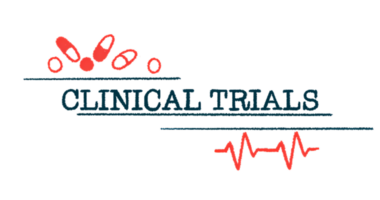Dietary Supplement Eases Parkinson’s Symptoms, Improves Dopamine Function, Study Shows

N-acetyl-cysteine (NAC), a compound that is used by the body to produce an antioxidant called glutathione, may improve dopamine function and ease Parkinson’s disease symptoms, researchers report.
Their study, “N-Acetyl Cysteine Is Associated With Dopaminergic Improvement in Parkinson’s Disease” was published in Clinical Pharmacology & Therapeutics.
Low brain levels of the antioxidant glutathione (GSH) is one of the earliest biochemical changes in Parkinson’s, leading to oxidative stress — an imbalance between the production of free radicals and the cells’ ability to detoxify them — and eventually, cellular death.
N-acetyl-cysteine (NAC) is an antioxidant supplement that provides a source of an amino acid called cysteine, which then is used by the body to produce glutathione. As such, supplementation with a glutathione precursor could increase overall glutathione levels in the brain, reducing oxidative stress levels and lessening the symptoms of this neurodegenerative disorder.
Investigators at Thomas Jefferson University in Philadelphia, Pennsylvania, previously demonstrated that NAC treatment improved dopamine metabolism in dopamine-producing neurons of the midbrain, a region that’s significantly damaged in Parkinson’s disease. Importantly, NAC also was found to improve patients’ motor symptoms. However, their results were from a small patient population (23 participants).
Join the Parkinson’s forums: an online community for people with Parkinson’s Disease and their caregivers.
The same team now explored whether nutritional supplementation with NAC improves dopamine-related brain function and alleviates Parkinson’s symptoms in a larger study sample. Dopamine acts as a neurotransmitter, which passes signals between neurons and is essential in sending messages from the brain to direct muscle movement and coordination. Throughout disease progression, dopamine-producing neurons die and the levels of dopamine in the brain gradually decrease.
Forty-two Parkinson’s patients (21 men and 21 women) were included in this trial (NCT02445651). Of those, 28 participants were randomized to receive a combination of daily and intravenous (50mg/kg) NAC for three months, while the remaining 14 were assigned to the control group.
“On the days that subjects did not receive the intravenous NAC, they took 600mg NAC tablets orally 2 times per day,” the researchers wrote. NAC injections were given once a week. “For the duration of the study, both groups continued to receive their current standard of care treatment for PD [Parkinson’s disease],” investigators added.
Subjects had their dopamine brain function and disease motor features evaluated before and after NAC treatment.
In comparison to the control group, NAC supplementation significantly increased dopamine transporter binding (mean increase from 3.4% to 8.3%) in the caudate and putamen, key structures that regulate body movement. Dopamine transporter is a protein that works to recycle dopamine after its release in the brain. In Parkinson’s, dopamine transporter levels may be reduced to up to 70%.
Researchers reported that dopamine transporter binding measures were higher in subjects who were not taking levodopa compared to those who were.
Patients who received NAC had a significant lessening of motor and non-motor symptoms. Changes in patients’ symptoms were significantly correlated with dopamine transporter binding in the putamen, but not in the caudate region of the brain.
“The results suggest that a combination of intravenous and oral administration of NAC in PD [Parkinson’s disease] patients results in increased DAT [dopamine transporter] binding as well as improved symptoms,” the researchers wrote.
However, the team noted that larger placebo-controlled studies are necessary to assess NAC’s potential to manage Parkinson’s disease.






